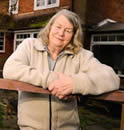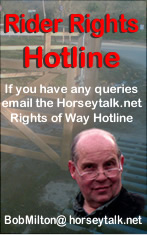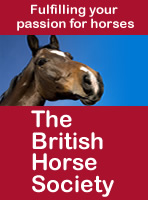
Horseytalk.net/Hoofbeat EXCLUSIVE
RIDER RIGHTS

Common Lands of England
Maureen Comber writes to Damian Hinds MP regarding the letter from the Minister
 The Minister clearly states that these matters fall between the applicant and the commoners and that a formal declaration also accompanies the application that they are able to deliver the management outcomes for which they have applied.
The Minister clearly states that these matters fall between the applicant and the commoners and that a formal declaration also accompanies the application that they are able to deliver the management outcomes for which they have applied.
In fact I am told that what actually happens is that the NE officer and the dictates from the heathland adviser implies that no funding will be forth coming without extensive grazing over the whole of the common.
We have examples of a number of agreements which clearly state that the agreement is thus predicated from the very start before any consultation with the public
Dear Damian,
May I once again thank you for obtaining a response from the Minister for Natural Environment and Fisheries, Richard Benyon MP, to my letter of 2nd April 2013. It was most helpful and gradually I think we are edging towards a conclusion to this correspondence. However we are not quite there yet so I make the following points and questions with regard to his reply.
1. I note that he says the applicant has formerly confirmed that “reasonable lengths’ have been gone to by way of contacting all graziers and persons entitled to exercise rights of common.” I have to say that I find this statement ambiguous because it does not say that contact and consultation has first been made with ‘the commoners’. Defra’s guidance is quite clear on this point and I am reliably informed that this has not taken place. Indeed from my own experience as the Hon. Sec. of Broxhead Commoners Association, I had no prior contact with the local Council until I attended the general public consultation. Also the background papers to the proposed consultation contained inaccuracies which were misleading.
The Minister says that “the applicant also signs to confirm that ‘commoners’ who are not party to the agreement are not in a position to jeopardise the objectives and requirements of the scheme” I would make two points with regard to this statement.
a. In the case of Padworth Common, at Public Inquiry it was shown that the HLS agreement was subject to disregard and abuse by the applicants during the short time the Inquiry sat, before the Inspector postponed it (now withdrawn), because although it was stated that they had signed the document in fact they had not actually done so. Natural England officers appear to ignore this requirement? In addition at Hawkesbury, the local authority has admitted they did not consult the commoners because they did not think it was necessary!!
b. The application requirements for HLS funding are quite specific in that they require: evidence of true ownership by disclosing title; or evidence that consent from an owner has been obtained, and that evidence is also disclosed. However many if not most of the commons applications have been submitted by Wildlife Trusts for commons which are no more than ‘vested’ with a local council rather than owned as the Act requires. It may be that is confused by the production of Land Registry documents for ownership, where fifteen years is considered a good root of title, but that is not of course the case when it comes to common land. Having pointed out to the Land Registry recently, that my local common was listed in the Award to the Tithe Apportionment Act 1847 as being not owned, I was surprised to be informed by them that this was too long ago to be relevant? I find this difficult to believe and would ask the Minister if he would confirm this to be the case and if so how it is that previously un owned common land can suddenly appear as owned where it previously has been enacted that it is not?
- As commoners cannot lease, lend, sell or extinguish their rights away from the property from which their rights are registered, then the consent even if lawfully applied for cannot materialise.
- the acts of 2006 sections 47-1 (repeal of the rights to enclose common lands i.e sec 219 of the 1285 Act and 47-2 which prohibits any form of enclosure) is an enactment to which the supplementary applies also, this additionally contains, interests of persons having rights in relation to, or occupying the land, and in particular persons exercising rights of common over it.
- Consideration also has to be given to the interests of the neighbourhood.
- the public interest and any other matters considered to be relevent.
- the public interest is in nature conservation, conservation of the landscape, protection of public rights to access to any area of the land from all points of view and the protection of archaeological remains and feature s of historical interest.
- further....the regulations include provisions as to the steps to be taken by an applicant before submitting an application...the form and content of an application... the procedure to be followed.... the evidence to be supplied in support of the application....the fees....the steps of the national authority upon receipt of the application...the appointment of all of its functions in relation to the application and for the holding of a hearing or local inquiry.
The Minister clearly states that these matters fall between the applicant and the commoners and that a formal declaration also accompanies the application that they are able to deliver the management outcomes for which they have applied.
In fact I am told that what actually happens is that the NE officer and the dictates from the heathland adviser implies that no funding will be forth coming without extensive grazing over the whole of the common. We have examples of a number of agreements which clearly state that the agreement is thus predicated from the very start before any consultation with the public.
As can be seen from the above, any declaration would be at best misleading or at worst false, that is if they have been made in the first instance which clearly often is not the case. I am therefore bound to ask if Natural England should now recover funds which have been given on these false declarations to some or all of the points listed above since the permission given by the Planning Inspectorate for the fencing is subject to the Supplementary that it does not contravene any other Act or Scheme which it clearly does?
3.Thank you for explaining the process of elimination of the Commons Commissioners. I now understand that the process was already underway via the CA2006. Their demise may be one of the spurious and Machiavellian plots engineered by the last Labour government but as can be clearly seen, will be laid at the door of the Coalition if this dismal state of affairs with the wholesale fencing of our common land is not quickly brought under control. The law, rules and regulations concerning applications to fence common land, are as we can see not being adhered to by the applicants.
4.Thank you also for clearing up the issue of ‘vesting’.
However we must not forget that it is s9 Commons Registration Act 1965 which is where the definition of the powers of such a vesting was defined. What is not also dealt with is the paying of stewardship funds [EU CAP] to a body that is not the owner / lessee or tenant i.e. has a legal interest which is where the duty lies in respect to the Habitat Directive. The reason why the commoners have to have been consulted and be legally tied in is because they have a legal interest in the land. I should be grateful for an explanation as to why this seems not to be taken into account?
5. I note with interest that “Natural England recognises the value of grazing used in combination with cutting, burning and other techniques for the management of habitats on commons. Grazing animals can have a more selective impact on heathland swards than machinery and can slow down the rate at which scrub expands across a site but they do not replace cutting and burning”; so please may I ask why are we and the managers of public access commons restricted within the funding regime to extensive grazing over the whole of the common rather than allowing focused intensive grazing as allowed for as part of the exempt regulations and envisaged by Parliament in the Commons Act 2006. As you can also see the basis of grazing is ‘can’ ‘can’ ‘can’ not does?
There is also the issue of displacement of existing public rights of access for recreation and air and exercise caused by imposition of whole common extensive grazing by Natural England. Given the statement in paragraph 5 why does the Inspectorate take the misleading and one sided evidence of NE as inalienable?
Steve Yandall comments on the letter from the Minister
The response from Benyon re applicants choosing their own regime is semantics.
Says Steve Yandall
 The response from Benyon re applicants choosing their own regime is semantics.
The response from Benyon re applicants choosing their own regime is semantics.
The HLS scheme is weighted toward fencing/grazing by Europe as the greatest £ return/mimimum input can only be achieved by applying for fencing/grazing. As in most cases the fencing is also funded the choice is always going to be pro grazing.






